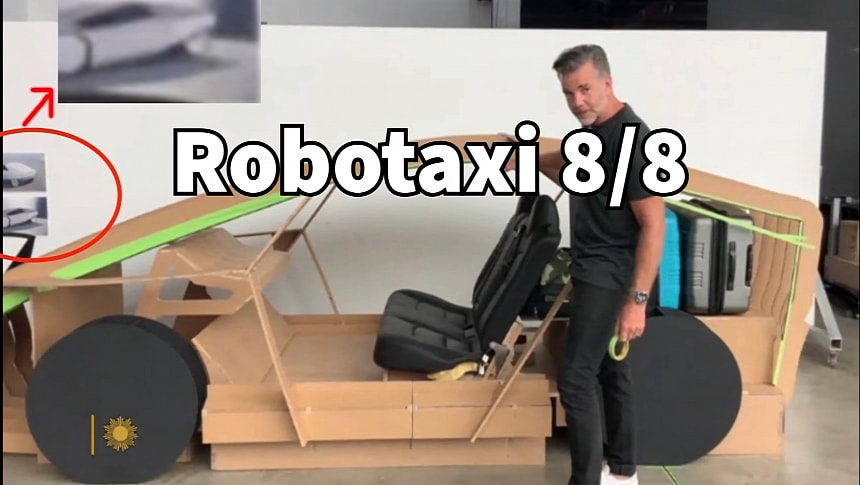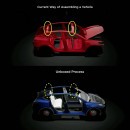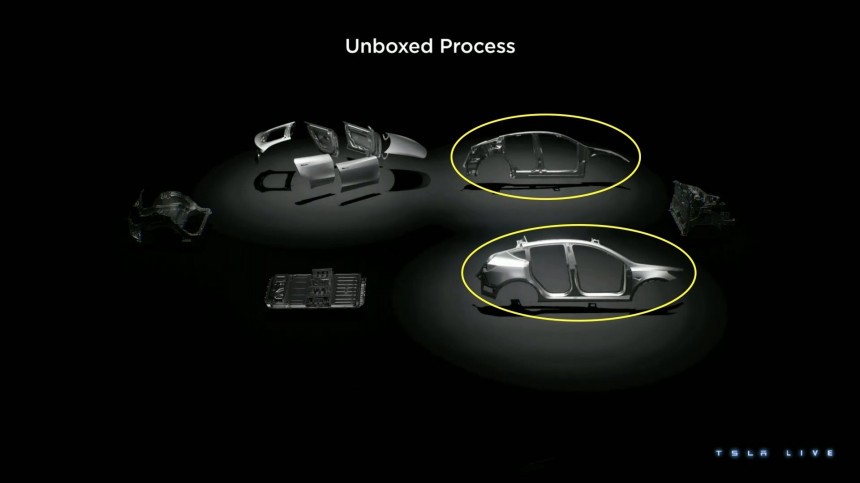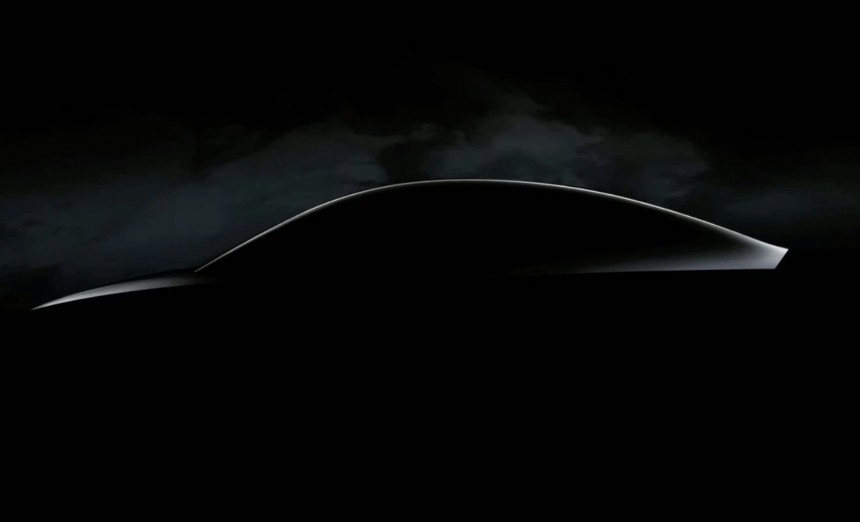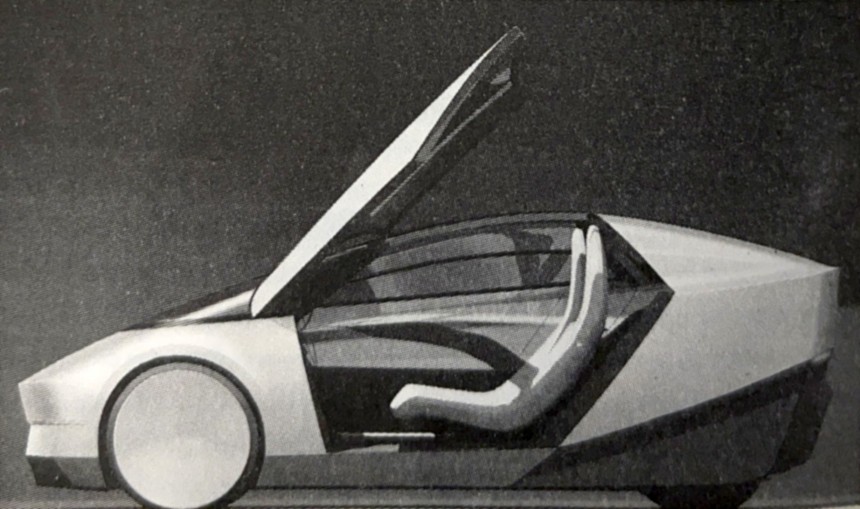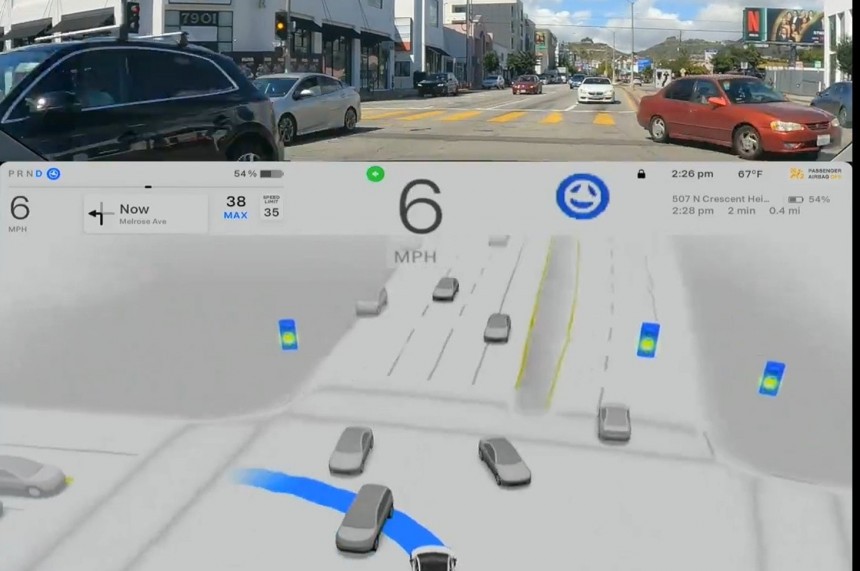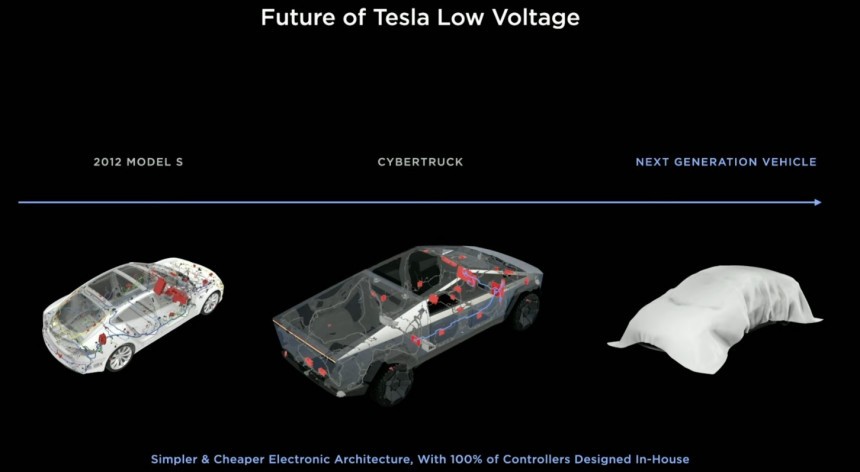Amid contradictory rumors about Tesla's Gen-3 program, Elon Musk announced that the EV maker will unveil a robotaxi on August 8. The announcement took many by surprise, but few believe that Tesla will be able to launch a driverless car soon. Far from relieving investors, the announcement could thrust Tesla shares to new lows.
Last year, Tesla used Investor Day to announce bold plans to produce an affordable electric car that would sell tens of millions of units across the globe. To be fair, the idea of a $25,000 electric vehicle has been floating around for a long time. However, the plans were quickly binned once the pandemic struck in 2020. After part shortages and supply chain issues throughout 2022, the Model 3, once touted as a $35K EV, reached a starting price of $47,000. The most affordable Model Y retailed at $66,000 in June 2022, and Tesla could not produce enough to quench demand.
With people willing to pay crazy amounts of money to buy just about any vehicle they could find, it made little sense for Tesla to start the development of a cheap model. Tesla made tons of money selling overpriced EVs, and everyone was happy. Spending more money to earn less on cheaper EVs made no sense at the time. However, the car bubble burst just as unexpectedly as it began. Only half a year later, Tesla was forced to operate deep price cuts to keep the growth story alive.
This was when Tesla started to reconsider the idea of an affordable EV as a solution to keep the 50% year-over-year growth that it was so proud of. It was more complicated than that if we were to believe Walter Isaacson and his biographical book about Elon Musk. Smart people at Tesla had to convince Tesla's boss that an affordable EV was the only way Tesla could reach the planned 20 million EVs yearly production by 2030. Musk only thought of the robotaxi that he considered crucial for accomplishing Tesla's mission.
During Investor Day, Tesla unveiled plans for a new revolution in manufacturing, allowing it to cut production costs by half compared to the Model 3/Model Y. The unboxed vehicle manufacturing process ditched the classical production line that Ford invented. Instead of a car body (box) moving along a line, Tesla would split the vehicle into several sections ("unbox" it) and assemble them separately. This allows more people to work simultaneously while eliminating some redundant steps.
Legacy car production line starts by stamping and welding the body parts, after which the whole body is primed and painted. The doors are removed afterward while the car body continues down the line to install various components, including the suspension and the engine. The doors are re-attached to the body at the end of the production line, completing the assembly process.
By splitting the car into several sections, Tesla could build each one separately. Instead of painting the whole body, it could only paint the necessary panels. The doors would not need to be removed because internal components could be installed openly in each section. At the end of the production line, the separate sections would be bonded together, completing the manufacturing process.
For this to work, Tesla must eliminate all the legacy components that would make splitting and merging car sections impossible. These include wiring harnesses and brake lines. Tesla filed several patents that would enable precisely this, including one for a modular wire harness integrated into the body parts. This supports robotic assembly, as various components can be assembled like Lego pieces without the need to install additional wires.
When it made the announcement, Tesla framed it as a good thing, allowing it to speed up the development process. The Mexican gigafactory could not be ready soon enough to begin Gen-3 EV production in time. However, it turned out to be just a delaying tactic. Tesla again put the affordable EV plan on the back burner or even scrapped it, as a Reuters report revealed earlier this month.
According to the report, Tesla announced to the teams working on the project that work would stop. Suppliers were notified to "halt all further activities" related to the next-gen EV production. Instead, Tesla would focus on developing the robotaxi to fulfill Elon Musk's dreams. However, the robotaxi would have much lower volumes than the $25,000 EV. Without the economy of scale afforded by the mass-market EV, the robotaxi might become a money pit for Tesla.
Walter Isaacson's book about Elon Musk reveals the picture of a prototype of the upcoming robotaxi. However, whether this has anything to do with the final product or the $25,000 EV is unclear. The two-seater in the picture had a quirky shape with 1980s vibes and butterfly doors. Although the design is secondary to a utilitarian vehicle not destined for retail customers, the two-seat configuration is bizarre. Many consider that most people in the US ride solo, and more than two seats would be a waste. However, this would make the robotaxi useless for families.
The Reuters report infuriated Elon Musk, who called it an outright lie. However, Tesla's CEO offered no clarification or assurance that the affordable EV project would continue as planned. Instead, a few minutes later, Musk announced that Tesla would unveil a robotaxi on August 8, basically validating the Reuters report. While Musk has always wanted to produce a driverless EV, many analysts consider the moment risky. Despite Tesla's progress with its Full Self-Driving software, autonomous vehicles could still be decades away.
Musk's announcement about the robotaxi unveiling caught many by surprise. Was this a rushed move in response to the Reuters article, or was it a planned announcement? The August 8 date (8/8) is significant in the Chinese culture, with eight being considered the luckiest number. Musk appeared to support this theory, adding that the robotaxi unveiling will be on 8/8 in the year of the dragon, another reference to good fortune. Unveiling the robotaxi on August 8 might indicate that Tesla planned this move.
However, for this to support Tesla's growth, it would take more than luck. Many consider it a gambit with few chances of success, at least for now. Tesla might reveal a robotaxi design or prototype in August, but that would have little effect on Tesla's production numbers. Even though Musk and other Tesla fans picture Tesla as an artificial intelligence instead of a car company, Tesla still makes most of its money from selling cars.
Tesla launched a vastly improved variant of the FSD software this month, which made Musk confident enough to release it to all compatible Tesla EVs in North America. This achievement may have caused Musk to change his mind about the affordable EV model. He may think autonomous driving is now within grasp, and the robotaxi might be more vital to Tesla than a cheap electric car. However, for the robotaxi to become a reality, Tesla still needs to overcome regulatory hurdles in addition to proving that FSD is safer than human driving.
A worrying report shows that Tesla has not yet contacted relevant authorities to seek approval for the upcoming robotaxi. After Musk's announcement, NBC News contacted California, Nevada, and Arizona authorities to see if Tesla had applied for permits required to operate driverless cars. These are among the states that allow driverless car testing, albeit some require a safety driver behind the wheel at all times. None of the authorities contacted by NBC News heard from Tesla about its robotaxi plans.
The fact that Tesla hasn't even attempted to acquire the permits suggests that robotaxi testing is too far into the future. Tesla might have no plan to start testing anytime soon. If that's the case, what we'll see on August 8 will most likely be the concept of a robotaxi. Hardware-wise, it might look like a production vehicle, considering how far along Tesla should be with the Gen-3 platform development. However, things are far less advanced on the software front.
Tesla has an enormous advantage over other companies pursuing autonomous driving, and that is its data collection capabilities. There are potentially two million Teslas in North America ready to collect driving data using the FSD software. Tesla has surpassed one billion miles driven on FSD, and the numbers are increasing exponentially. The EV maker ensured this trend continued by dropping the FSD subscription price from $199 to $99 so that a lot more people would enroll in the program.
Tesla needs an affordable compact EV to fuel the autonomous vehicle revolution. The time is running out, considering that Chinese carmakers are already flooding the market with cheap electric vehicles. Maybe this realization made Musk reconsider the affordable EV idea. If it cannot compete on price, it's worth competing on features. Autonomous driving could be the key differentiator that would keep Tesla on top.
However, many Chinese companies are also working on autonomous driving solutions. Some are even copying Tesla with vision-only solutions powered by artificial intelligence. They are still far behind Tesla, but that could change. Chinese companies have something that Tesla could not hope for: the unwavering support of their government. It's much easier for Chinese companies to surpass regulatory hurdles in China than for Tesla to do the same in the US or other parts of the world.
Some argue that Tesla could transition to an asset-light company, exiting the vehicle manufacturing business altogether. Instead, it would sell autonomous driving solutions, software, and services to other carmakers. That could very well be the case, but for this to happen, Tesla needs to turn all these lines of business into strong profit centers. Until this occurs, Tesla still needs to build cars, and lots of them.
With people willing to pay crazy amounts of money to buy just about any vehicle they could find, it made little sense for Tesla to start the development of a cheap model. Tesla made tons of money selling overpriced EVs, and everyone was happy. Spending more money to earn less on cheaper EVs made no sense at the time. However, the car bubble burst just as unexpectedly as it began. Only half a year later, Tesla was forced to operate deep price cuts to keep the growth story alive.
This was when Tesla started to reconsider the idea of an affordable EV as a solution to keep the 50% year-over-year growth that it was so proud of. It was more complicated than that if we were to believe Walter Isaacson and his biographical book about Elon Musk. Smart people at Tesla had to convince Tesla's boss that an affordable EV was the only way Tesla could reach the planned 20 million EVs yearly production by 2030. Musk only thought of the robotaxi that he considered crucial for accomplishing Tesla's mission.
The unboxed vehicle manufacturing process
After seeing the design of the compact EV, Musk agreed that it could offer Tesla the chance to dominate the car industry while also contributing to his dream of autonomous driving. However, producing an affordable electric vehicle was no trivial matter, and Tesla had to reinvent car manufacturing to cut production costs. This was considered a mandatory step toward making the $25,000 EV a reality.During Investor Day, Tesla unveiled plans for a new revolution in manufacturing, allowing it to cut production costs by half compared to the Model 3/Model Y. The unboxed vehicle manufacturing process ditched the classical production line that Ford invented. Instead of a car body (box) moving along a line, Tesla would split the vehicle into several sections ("unbox" it) and assemble them separately. This allows more people to work simultaneously while eliminating some redundant steps.
By splitting the car into several sections, Tesla could build each one separately. Instead of painting the whole body, it could only paint the necessary panels. The doors would not need to be removed because internal components could be installed openly in each section. At the end of the production line, the separate sections would be bonded together, completing the manufacturing process.
For this to work, Tesla must eliminate all the legacy components that would make splitting and merging car sections impossible. These include wiring harnesses and brake lines. Tesla filed several patents that would enable precisely this, including one for a modular wire harness integrated into the body parts. This supports robotic assembly, as various components can be assembled like Lego pieces without the need to install additional wires.
The $25,000 EV is no longer a priority
Tesla appeared to have thought of every step of the new manufacturing process that would enable the $25,000 EV and its robotaxi twin. The EV maker even unveiled Giga Mexico as the first factory to deploy the new manufacturing process. However, things didn't go this way, and everyone was surprised to learn that Giga Mexico was no longer a priority. Instead, Tesla announced that the unboxed manufacturing process and the next-generation EVs will begin life at Giga Texas.When it made the announcement, Tesla framed it as a good thing, allowing it to speed up the development process. The Mexican gigafactory could not be ready soon enough to begin Gen-3 EV production in time. However, it turned out to be just a delaying tactic. Tesla again put the affordable EV plan on the back burner or even scrapped it, as a Reuters report revealed earlier this month.
Walter Isaacson's book about Elon Musk reveals the picture of a prototype of the upcoming robotaxi. However, whether this has anything to do with the final product or the $25,000 EV is unclear. The two-seater in the picture had a quirky shape with 1980s vibes and butterfly doors. Although the design is secondary to a utilitarian vehicle not destined for retail customers, the two-seat configuration is bizarre. Many consider that most people in the US ride solo, and more than two seats would be a waste. However, this would make the robotaxi useless for families.
The Tesla robotaxi will be unveiled on August 8
Of course, Tesla could offer two variants of the driverless vehicle, with the second being a driverless pod or minivan. However, this would complicate production even further. Remember that the robotaxi will not be a volume-production vehicle. Even if Tesla nails the vehicle autonomy, the market will be slow to adopt autonomous vehicles. The first customers are ride-sharing companies like Uber, and they will not need that many robotaxis all at once. The great replacement will happen slowly, and it's unlikely that autonomous vehicles will take off earlier than 2030.The Reuters report infuriated Elon Musk, who called it an outright lie. However, Tesla's CEO offered no clarification or assurance that the affordable EV project would continue as planned. Instead, a few minutes later, Musk announced that Tesla would unveil a robotaxi on August 8, basically validating the Reuters report. While Musk has always wanted to produce a driverless EV, many analysts consider the moment risky. Despite Tesla's progress with its Full Self-Driving software, autonomous vehicles could still be decades away.
However, for this to support Tesla's growth, it would take more than luck. Many consider it a gambit with few chances of success, at least for now. Tesla might reveal a robotaxi design or prototype in August, but that would have little effect on Tesla's production numbers. Even though Musk and other Tesla fans picture Tesla as an artificial intelligence instead of a car company, Tesla still makes most of its money from selling cars.
FSD breakthrough
This will continue to be the case until other product lines catch up in revenue. Elon Musk considered that its self-driving software could be worth billions. It is the centerpiece of the company's plans not only for robotaxis but also humanoid robots. Tesla Optimus will use the same software to navigate the world. However, it contributes almost nothing to Tesla's bottom line, and this will not change soon.Tesla launched a vastly improved variant of the FSD software this month, which made Musk confident enough to release it to all compatible Tesla EVs in North America. This achievement may have caused Musk to change his mind about the affordable EV model. He may think autonomous driving is now within grasp, and the robotaxi might be more vital to Tesla than a cheap electric car. However, for the robotaxi to become a reality, Tesla still needs to overcome regulatory hurdles in addition to proving that FSD is safer than human driving.
The fact that Tesla hasn't even attempted to acquire the permits suggests that robotaxi testing is too far into the future. Tesla might have no plan to start testing anytime soon. If that's the case, what we'll see on August 8 will most likely be the concept of a robotaxi. Hardware-wise, it might look like a production vehicle, considering how far along Tesla should be with the Gen-3 platform development. However, things are far less advanced on the software front.
The next-generation EV is still crucial
It took Waymo eight months to get its initial permit to operate a commercial robotaxi service from the moment it started offering free test rides. It applied in December 2022 and won approval in August 2023. However, Tesla has approached self-driving differently from Waymo, so the approval process could be different. Tesla has deployed its FSD software nationwide as a driver assistance system. On the other hand, startups like Waymo and Cruise have operated driverless services in small geographical areas. Tesla's vision-only approach also differs from Waymo's sensor-packed robotaxis.Tesla has an enormous advantage over other companies pursuing autonomous driving, and that is its data collection capabilities. There are potentially two million Teslas in North America ready to collect driving data using the FSD software. Tesla has surpassed one billion miles driven on FSD, and the numbers are increasing exponentially. The EV maker ensured this trend continued by dropping the FSD subscription price from $199 to $99 so that a lot more people would enroll in the program.
However, many Chinese companies are also working on autonomous driving solutions. Some are even copying Tesla with vision-only solutions powered by artificial intelligence. They are still far behind Tesla, but that could change. Chinese companies have something that Tesla could not hope for: the unwavering support of their government. It's much easier for Chinese companies to surpass regulatory hurdles in China than for Tesla to do the same in the US or other parts of the world.
Some argue that Tesla could transition to an asset-light company, exiting the vehicle manufacturing business altogether. Instead, it would sell autonomous driving solutions, software, and services to other carmakers. That could very well be the case, but for this to happen, Tesla needs to turn all these lines of business into strong profit centers. Until this occurs, Tesla still needs to build cars, and lots of them.
